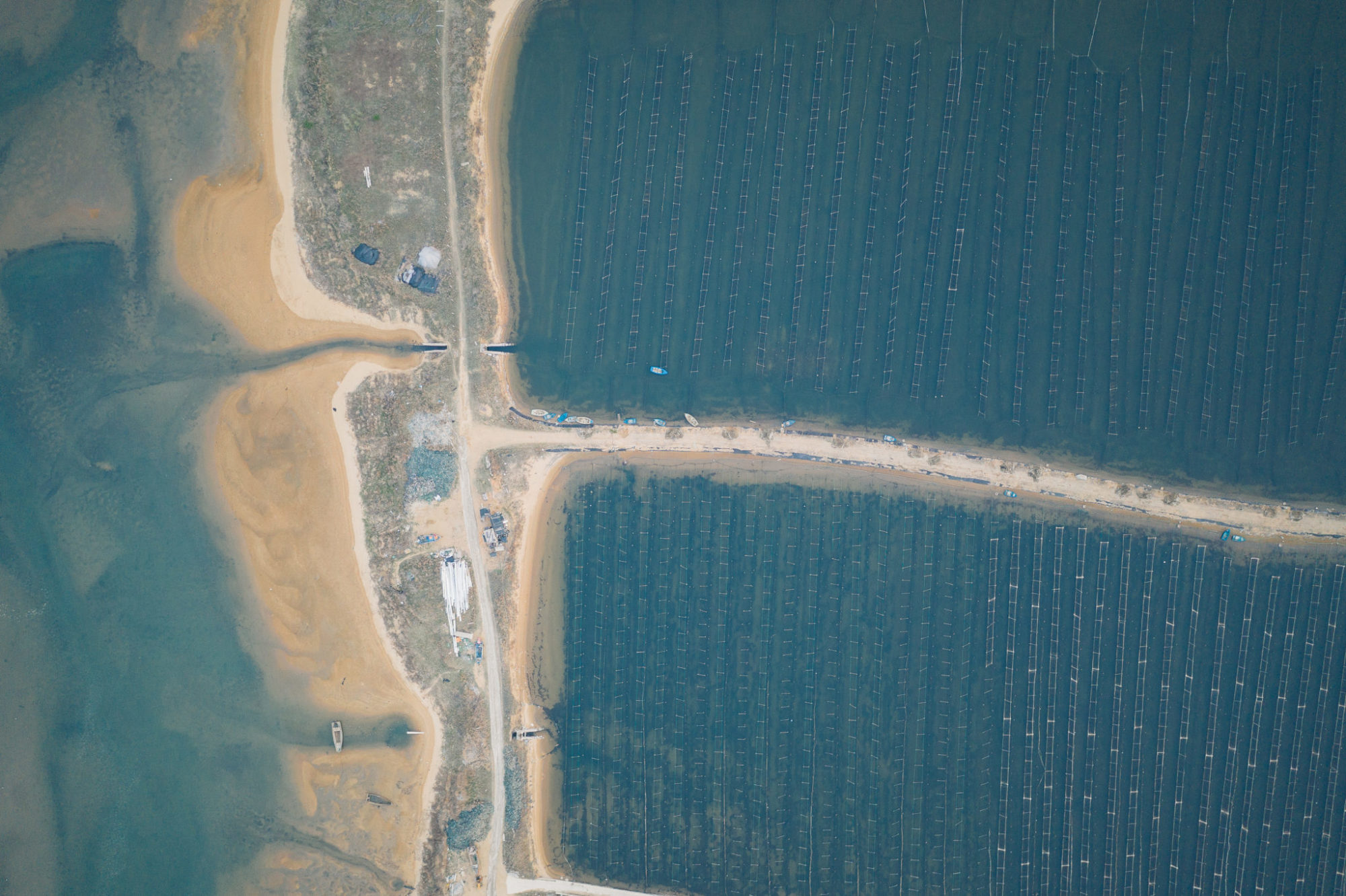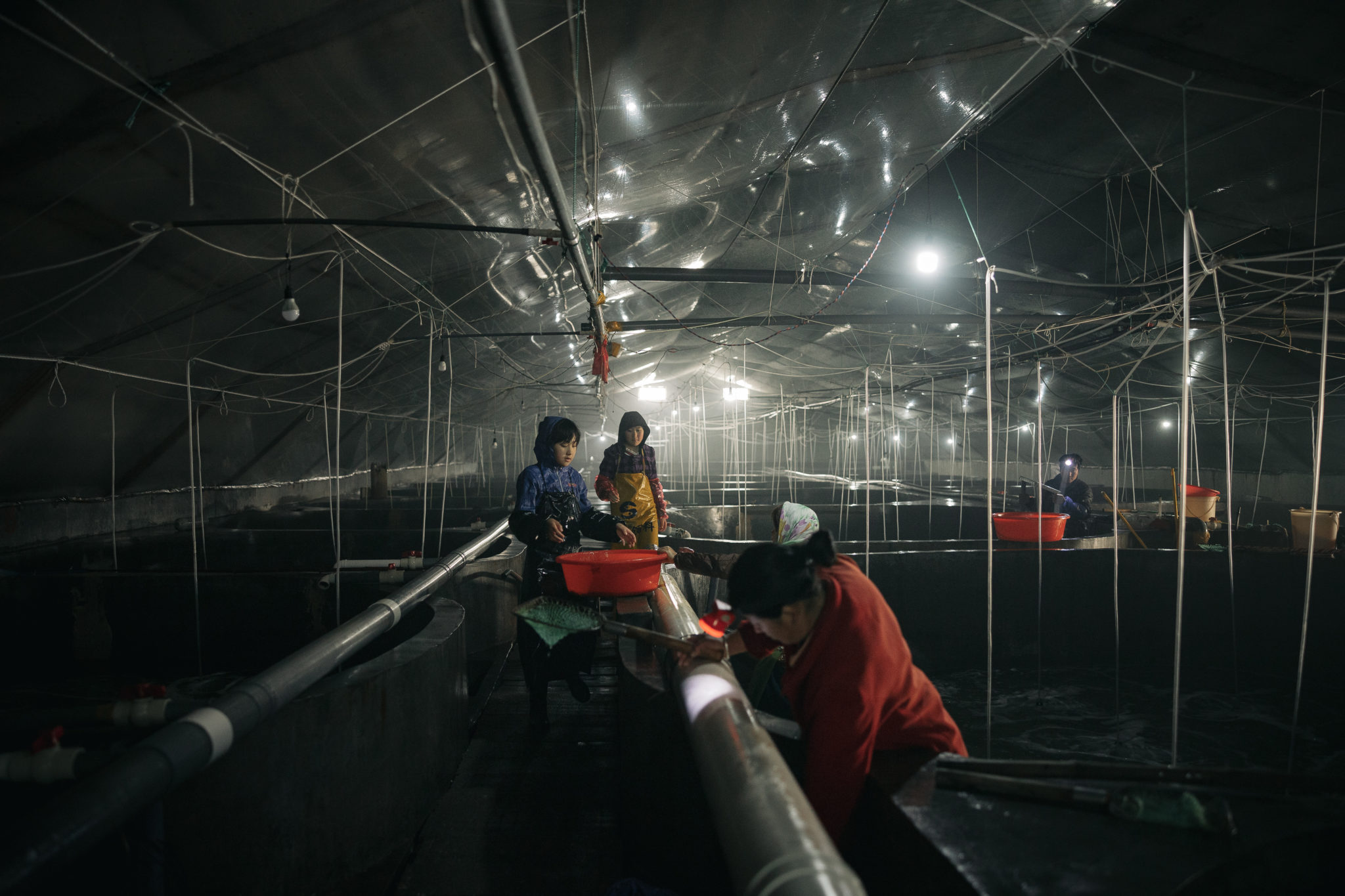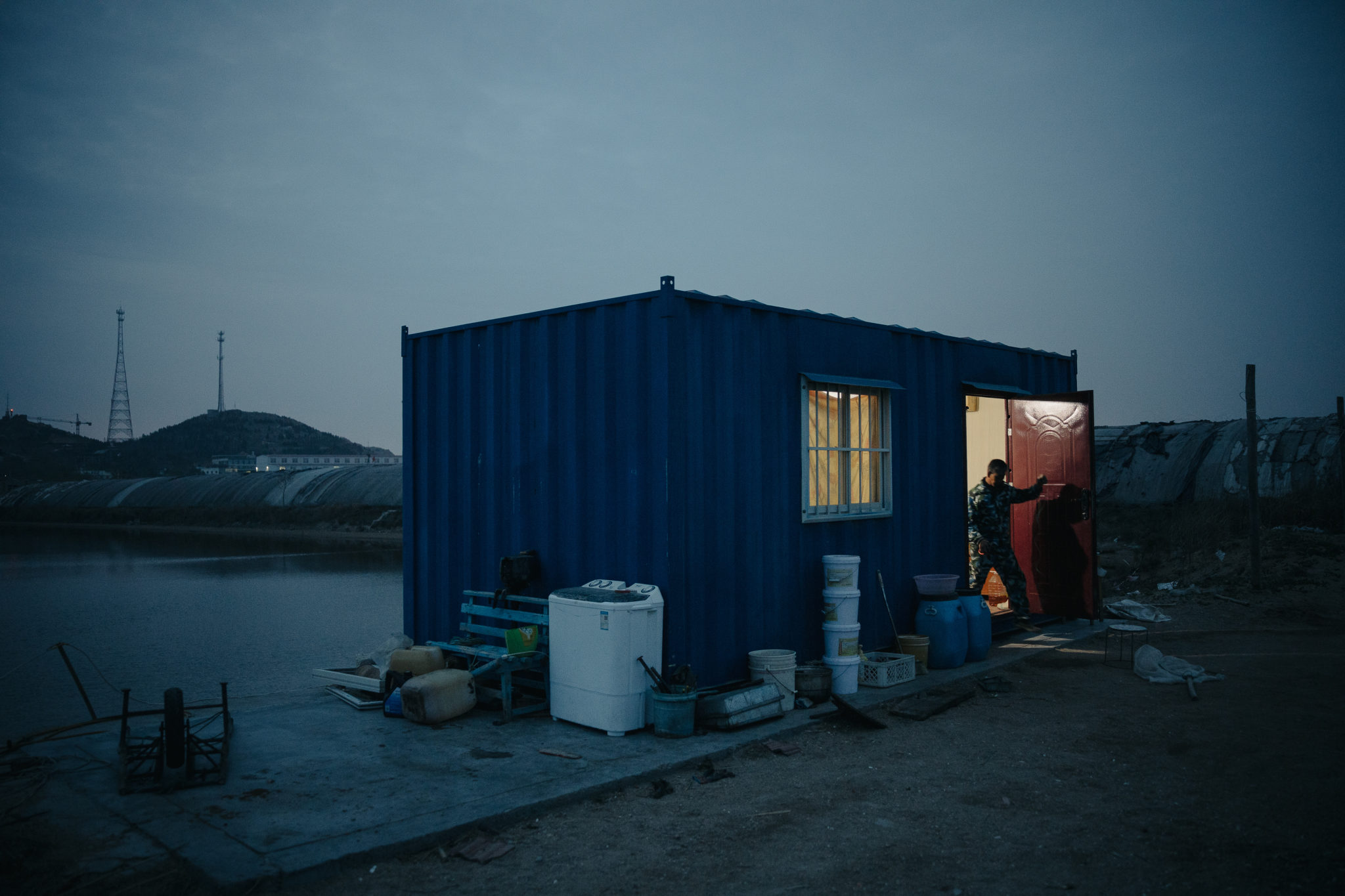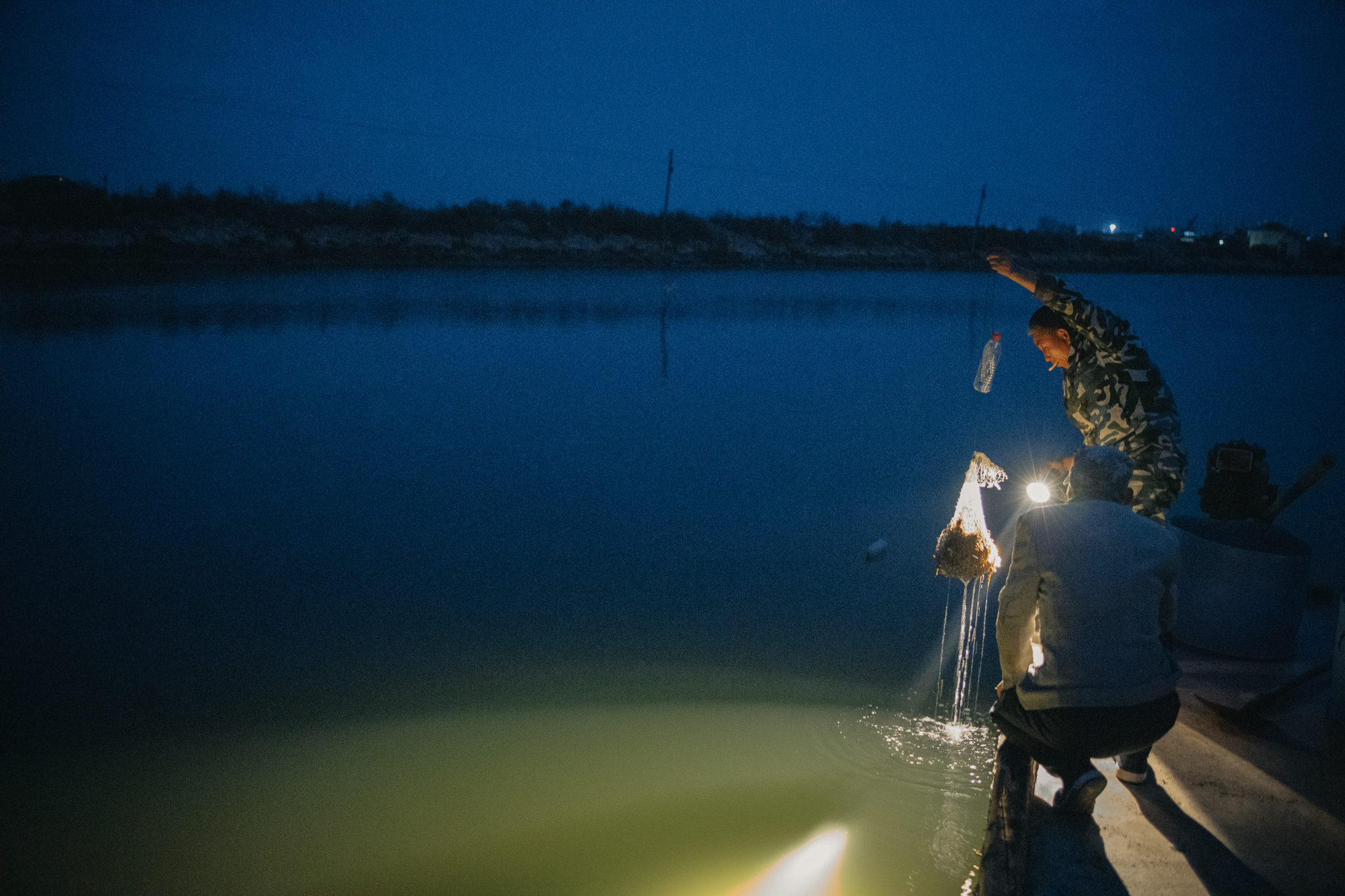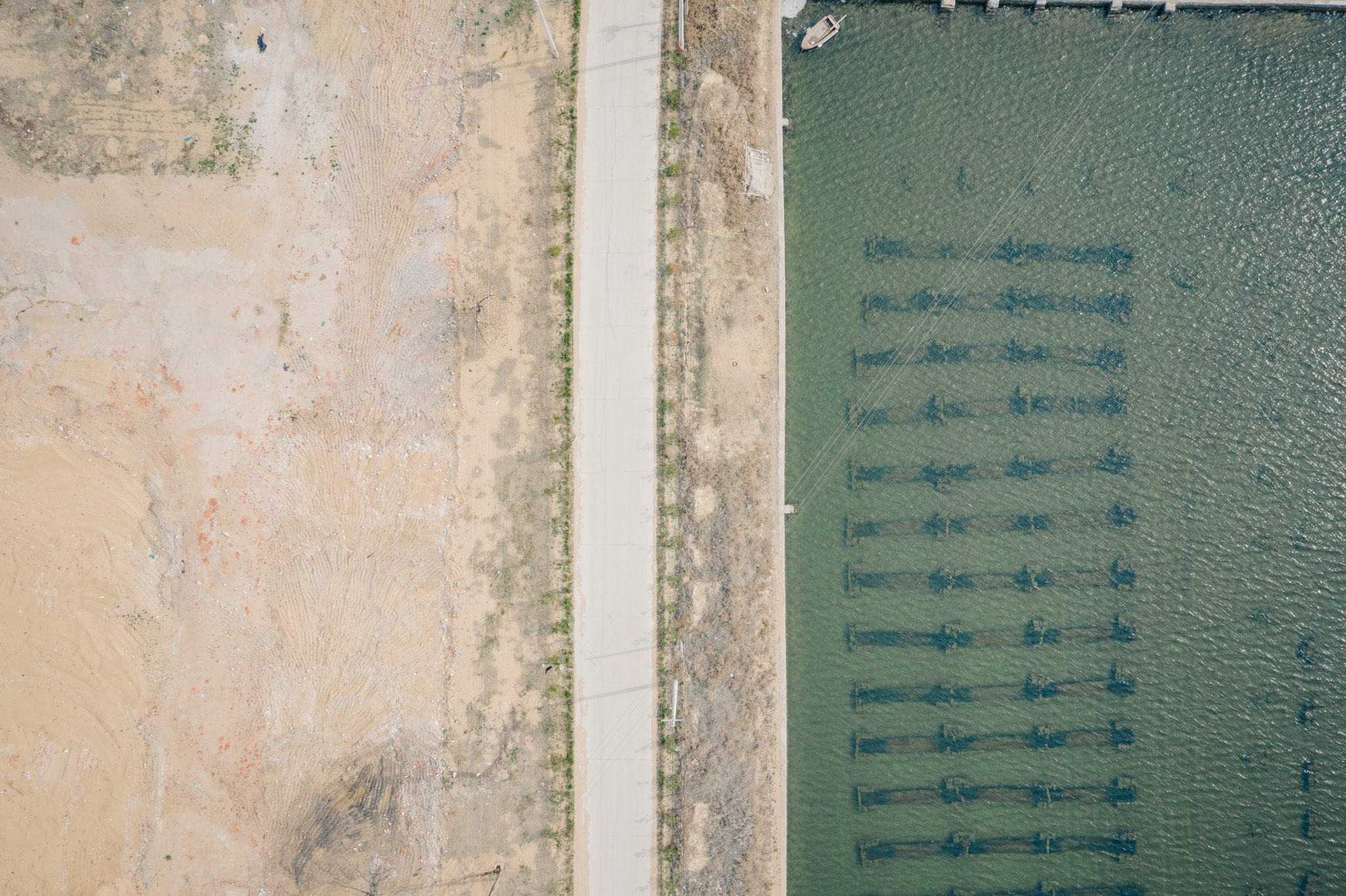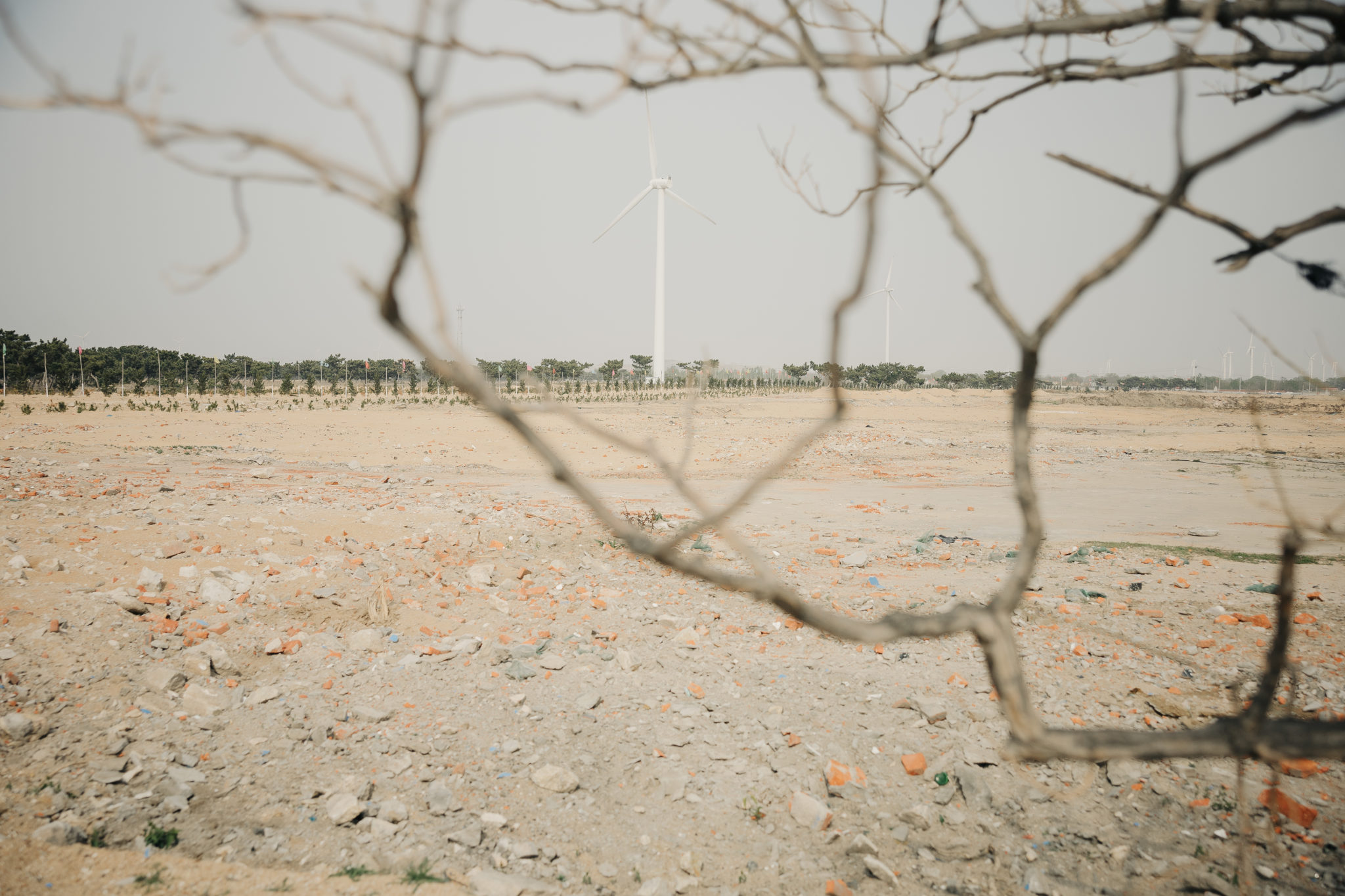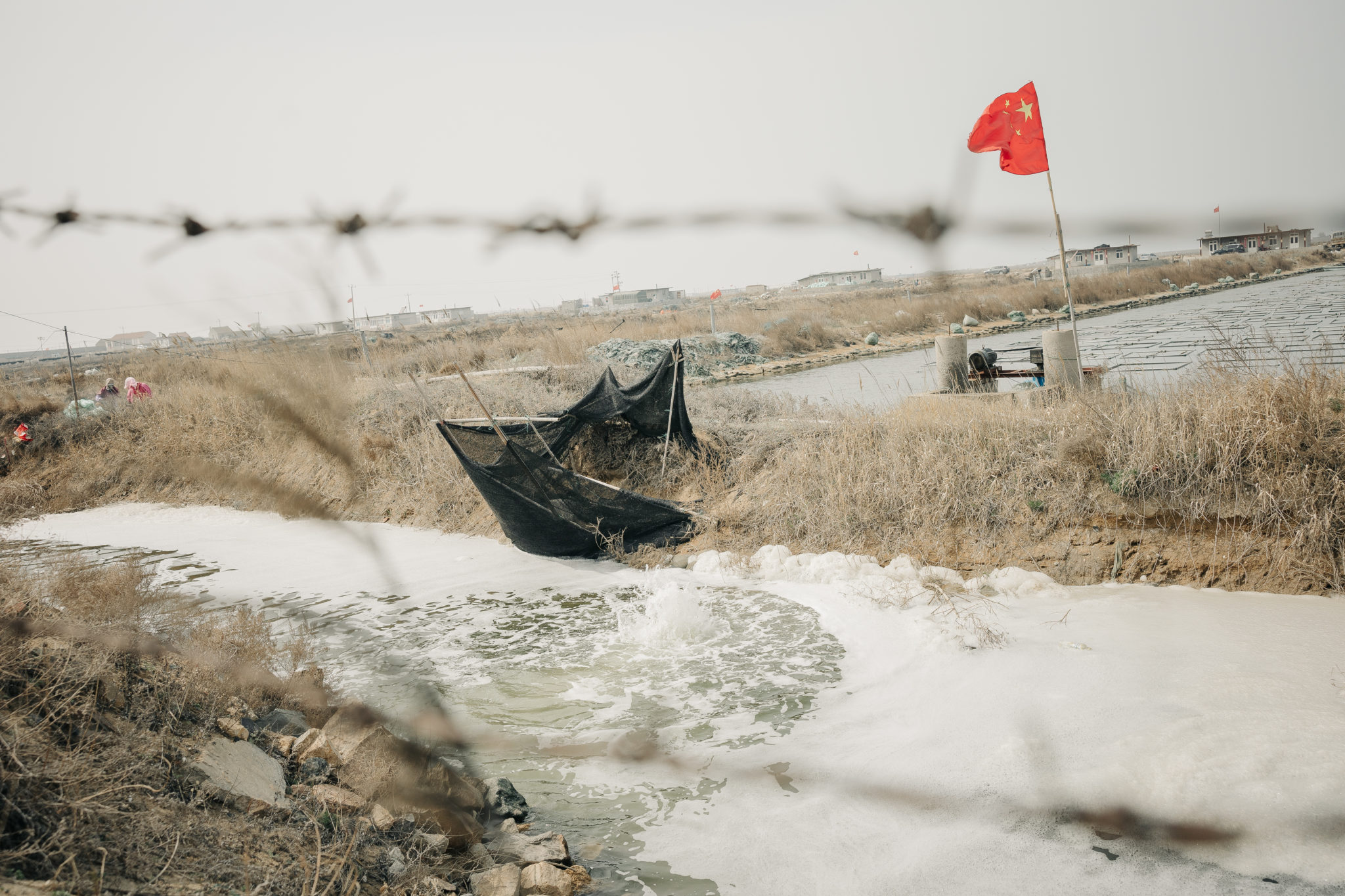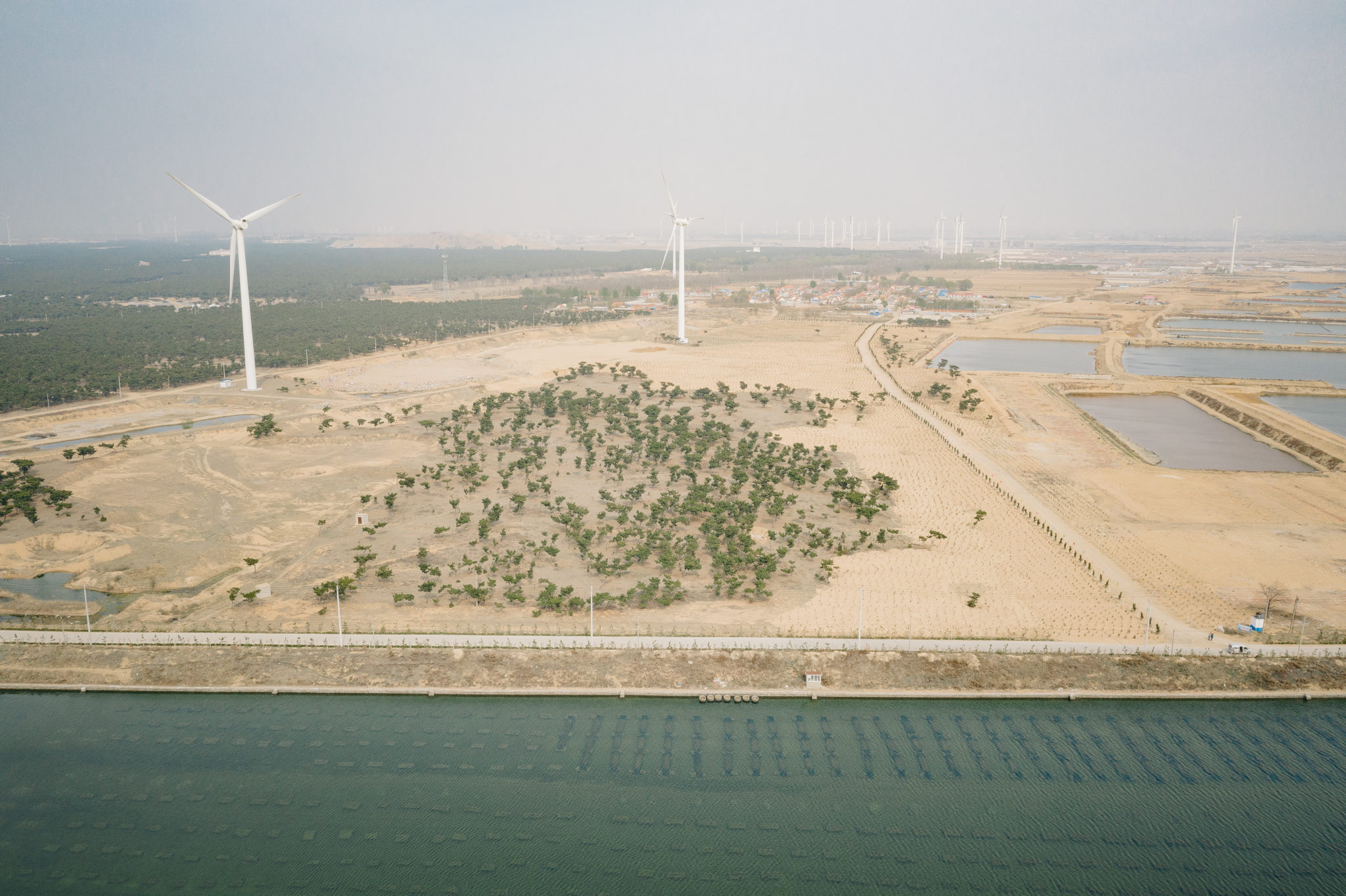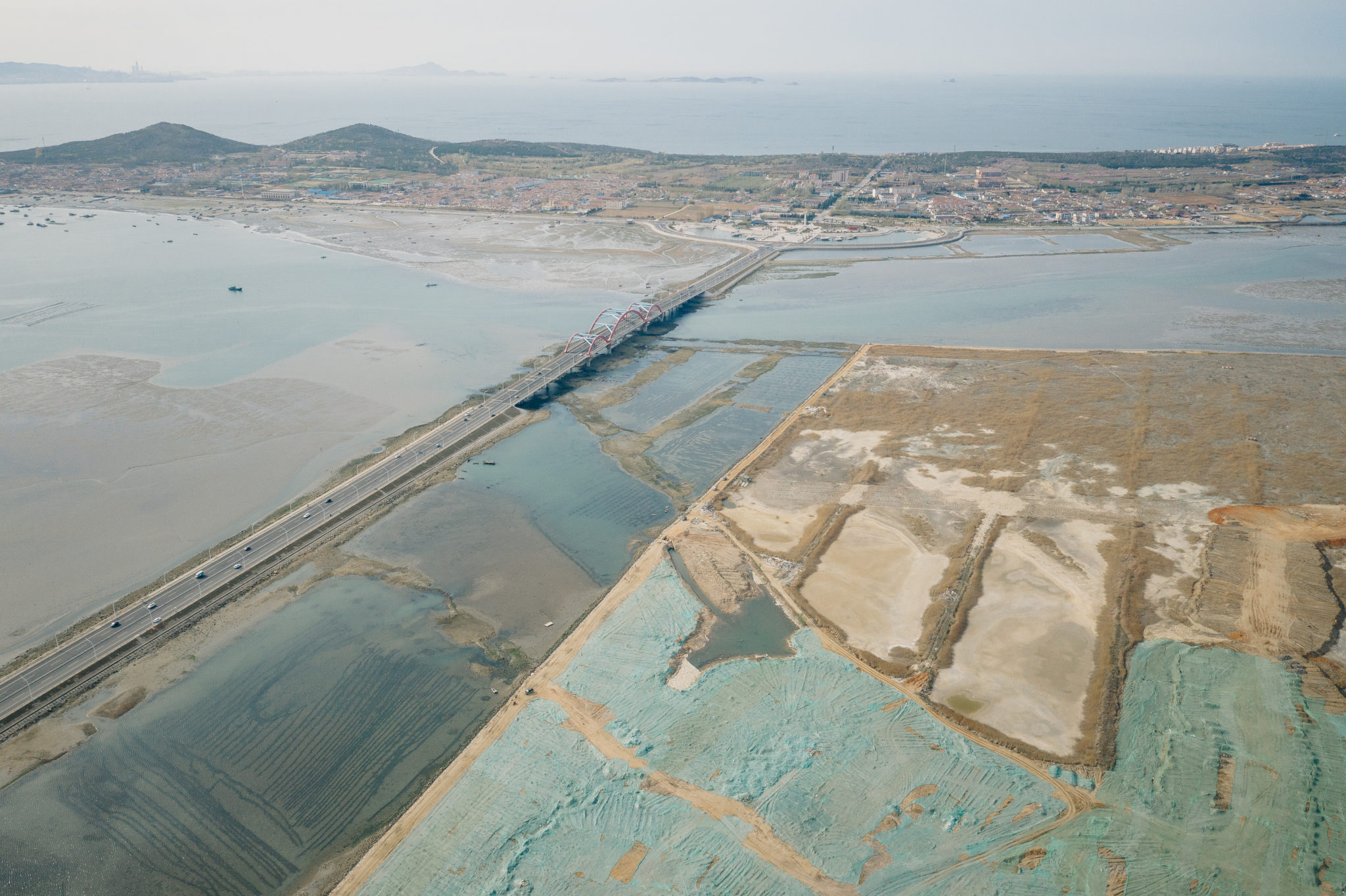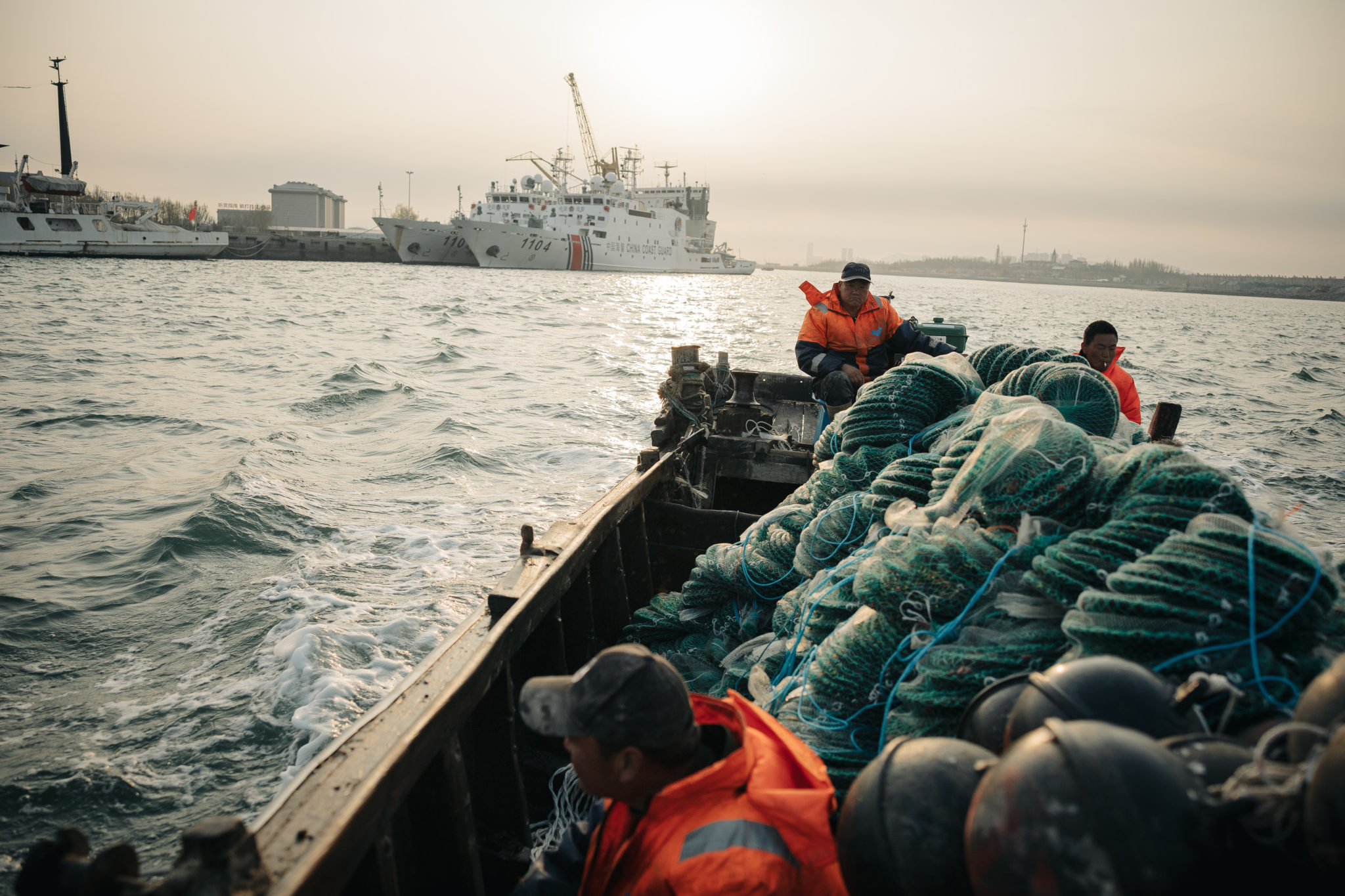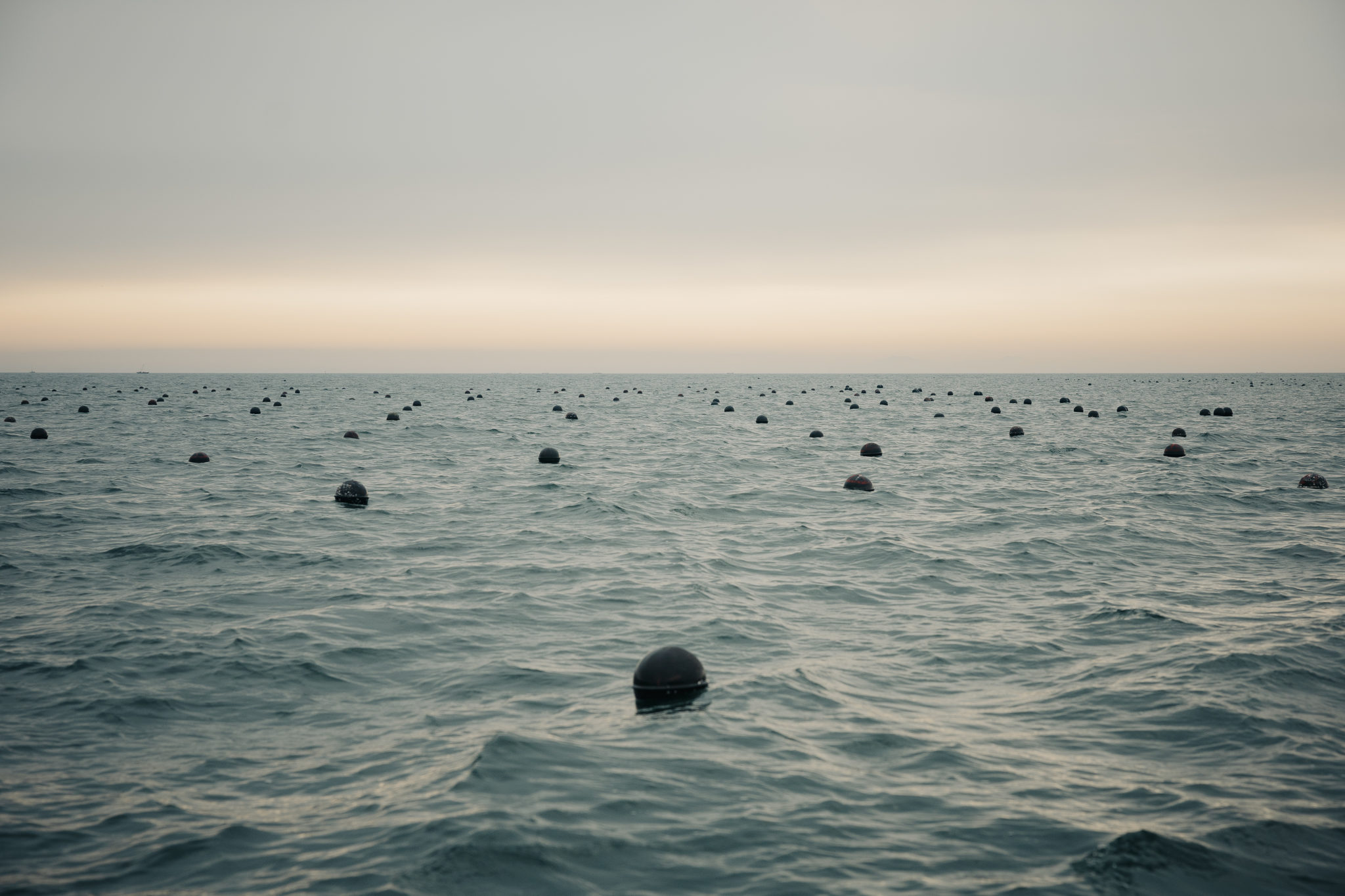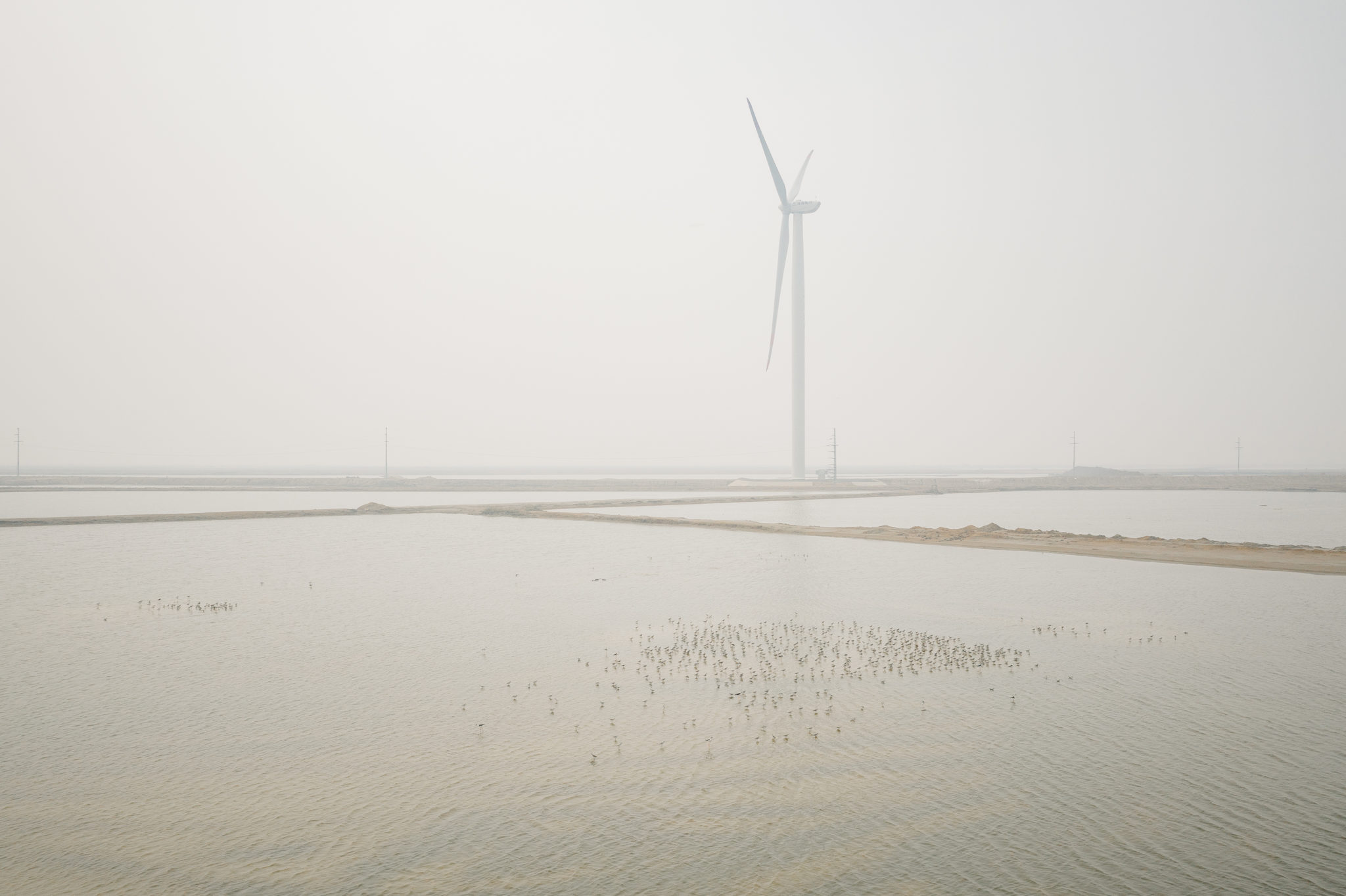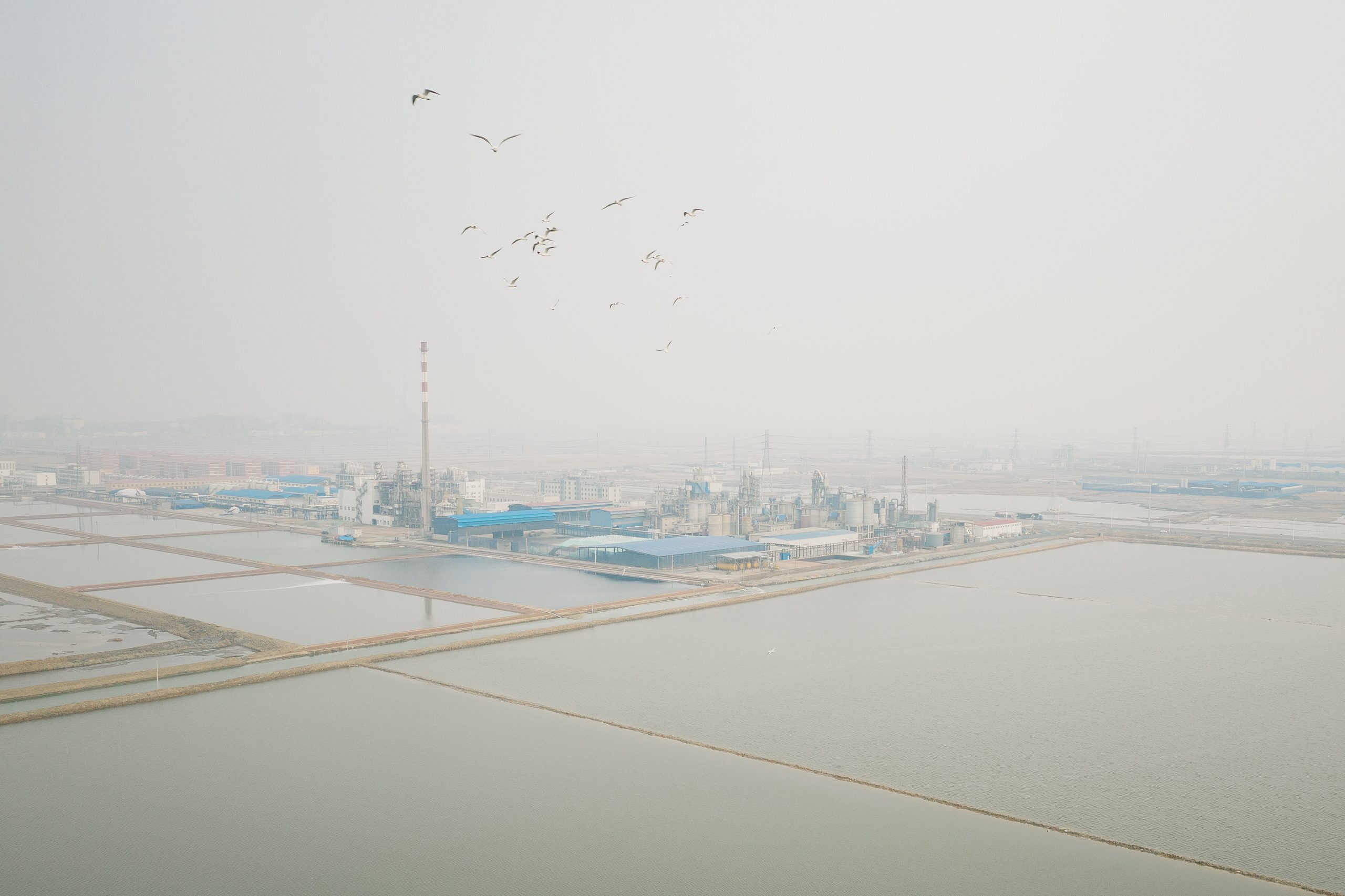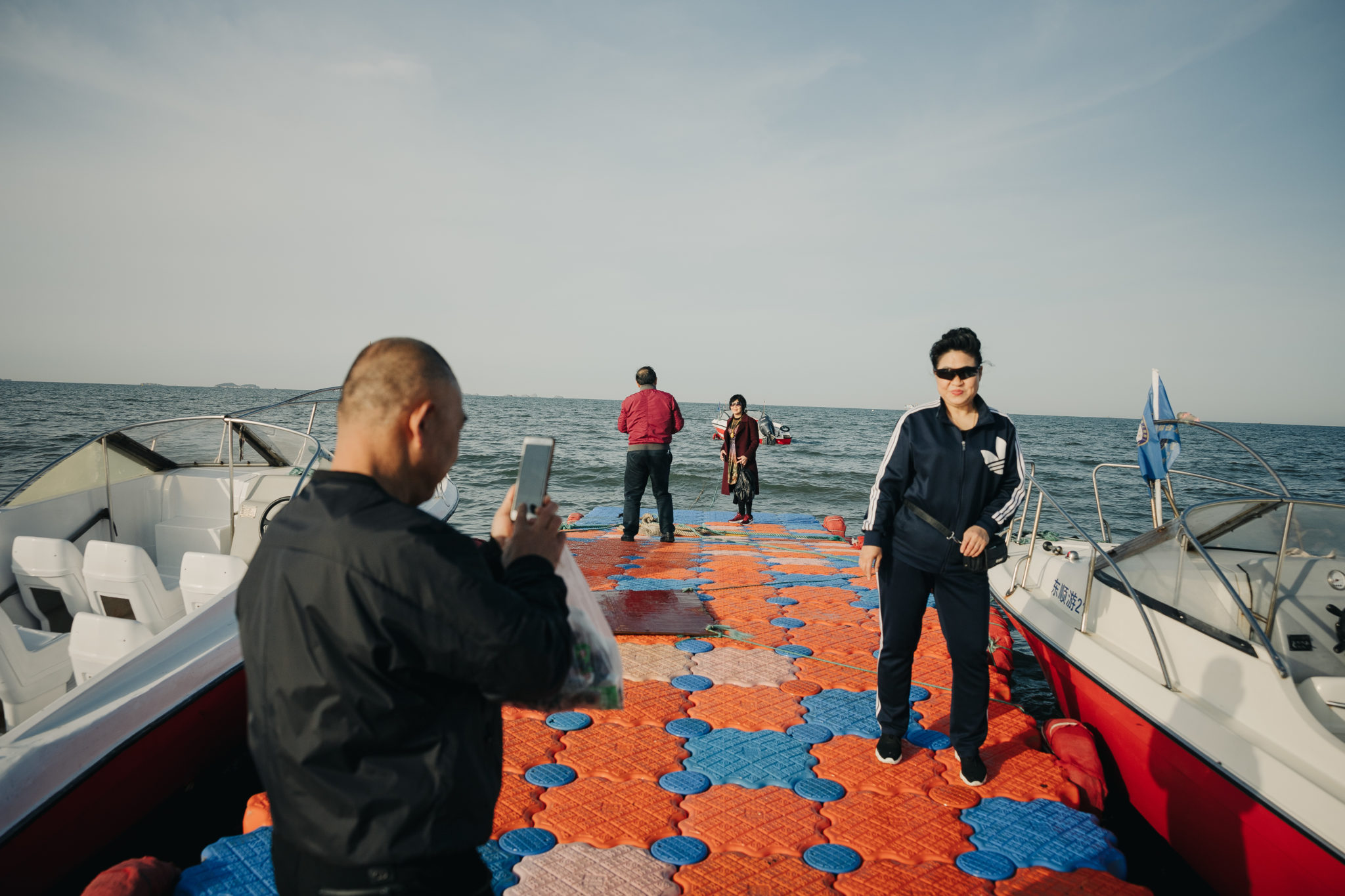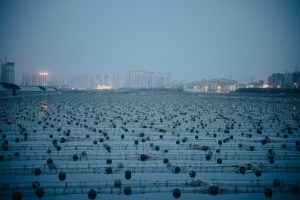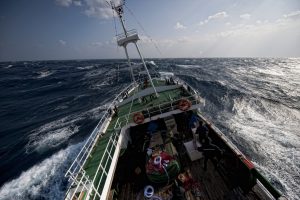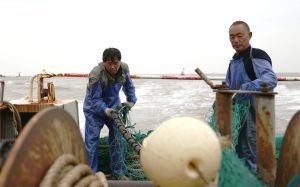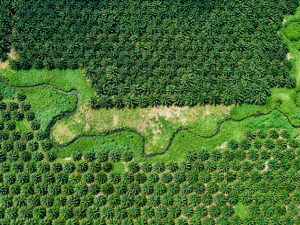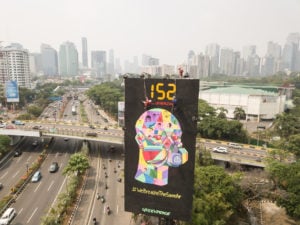Aquaculture has spurred economic growth in Shandong province, but it has also seriously polluted its coastline. In the last two years the government has responded by curtailing fish farms in wetlands and mudflat ecosystems. Liu Yuyang visited the peninsula to document what’s happening to the aquaculture farms there, as well as the farmers. His images show us the fates of both the coastline and the people affected by China’s “ecological civilization” and “blue economy”.
“In China, three of every four consumed fish are farmed. Globally, two of every three farmed fish are Chinese,” explains a Ministry of Agriculture official. A 2018 report from the United Nations Food and Agriculture Organisation shows that China’s aquaculture sector has produced more than the rest of the world combined since 1991, with China currently accounting for 60% of global output.
But unmanaged development has meant large expanses of China’s shallow waters and wetlands have been occupied by fish farms, sometimes too intensively and with the over-use of chemicals such as antibiotics.
Recommended
The situation in the Bohai Sea is particularly grave. Unlike the deeper East China and South China seas, the Bohai is semi-enclosed, shallow and largely calm, so aquaculture has expanded rapidly there. Industrialisation and urbanisation along the coast have also meant more pollution and land reclamation. This has weakened the environmental capacity of the Bohai.
In 2018, the government published an action plan to improve management of the Bohai, setting targets for marine pollution and ecological restoration.
Certain areas have been instructed to improve standards and reduce the scale of coastal aquaculture. The aims are to bring the sector in line with environmental requirements, promote more environmentally-friendly and attractive aquaculture approaches and encourage deep-sea aquaculture and marine ranching. An earlier plan also called for the restoration of China’s wetlands, requiring a coverage of more than 533,333 square kilometres by 2020. This plan stipulated that wetlands converted to other uses without permission should be reinstated.
One of the areas named in the 2018 action plan was Laizhou Bay, where Liu Yuyang captured some of the photographs below.
Improper handling of aquaculture waste, such as water polluted with nutrients, antibiotics and faecal solids, can wreck coastal environments. At this coastal sea cucumber farm in Muping, effluent is discharged directly into the ocean.
Some aquaculture farms are in large seaside sheds that pump in water from the ocean and then discharge waste. These closely packed sheds are in the village of Sanshandao on Laizhou Bay.
Pumping seawater into the sheds takes huge amounts of electricity and labour. “Electricity alone is 14,000 to 15,000 yuan (US$2,080 to $2,230) a month,” says Sanshandao turbot farmer Mr Liu. Here, Mr Liu (pictured far right) and his family clean out their tanks.
Intensive shrimp farming requires large quantities of chemicals to ensure adequate levels of oxygen in the ponds. The resulting wastewater is discharged into the sea along with local sewage.
Local shrimp farmer, Li Guitao, 55, checks his ponds in the village of Sanshandao.
With the government’s new focus on tackling pollution from aquaculture, large numbers of fish farms are being removed around Laizhou Bay. This can be seen in the area to the left of this photo, which has been prepped for “ecological restoration”. It is set to become part of the Jincang Wetlands Park.
On the site of what is set to become the Jincang Wetlands Park, brick and concrete from the farms remain.
Next to the site of the park, a farm continues to discharge foamy wastewater.
As part of ecological restoration work, local pines have been planted on the site of the Jincang Wetlands Park.
There is also a clampdown on coastal aquaculture underway in Yantai’s Muping. These ponds are being filled in, with a car park planned.
The Shandong authorities are pushing “marine ranching” as an alternative to coastal aquaculture. Farmers like these from Yangma Island, opposite Muping, are being moved further offshore. Skipper Li Zhonghua (centre) and two employees are on their way to their farm.
A marine ranch worker and the huge number of floats needed. Li Zhonghua now farms scallops and oysters eight kilometres offshore, requiring a two-hour round trip every day.
Compared to coastal aquaculture, the costs of marine ranching are higher, and the income less stable. “It can be several million yuan in a good year, but you can lose just as much in a bad year,” says Li. There are a number of reasons for that lack of stability, but market factors are key – seafood prices fluctuate constantly.
Marine ranching operations cover a wider area than coastal aquaculture farms, necessitating more labour. Mr Li’s crew need to work 12-hour days to set these lantern nets, which are full of juvenile scallops.
In Wudi, near the city of Binzhou, the Shandong Bohai Seafood Company is trying a new way of farming shrimp. According to the firm, there are only three shrimp per square metre in these 2-4 square kilometre ponds, mimicking a more natural density.
Rather than discharging wastewater from its shrimp ponds into the ocean, the company recycles it to produce chemicals such as potassium sulphate, magnesium chloride and potassium chloride.
In its drive to protect the marine environment, Shandong has removed over 550 square kilometres of coastal aquaculture rafts and small-scale net cages in recent years. This has allowed for more coastal tourism. In Laishan, a district of Yantai, tourists snap photos on a pontoon while they wait for a speedboat ride to view the “scenic aquaculture”.
The recent changes have forced some farmers out of the aquaculture industry. Kong Fuchun now works as a taxi driver. He started working in aquaculture in Laishan about 20 years ago. He later relocated to Qingdao to farm sea cucumber and abalone, but changes in the local government’s policy brought an end to that.
